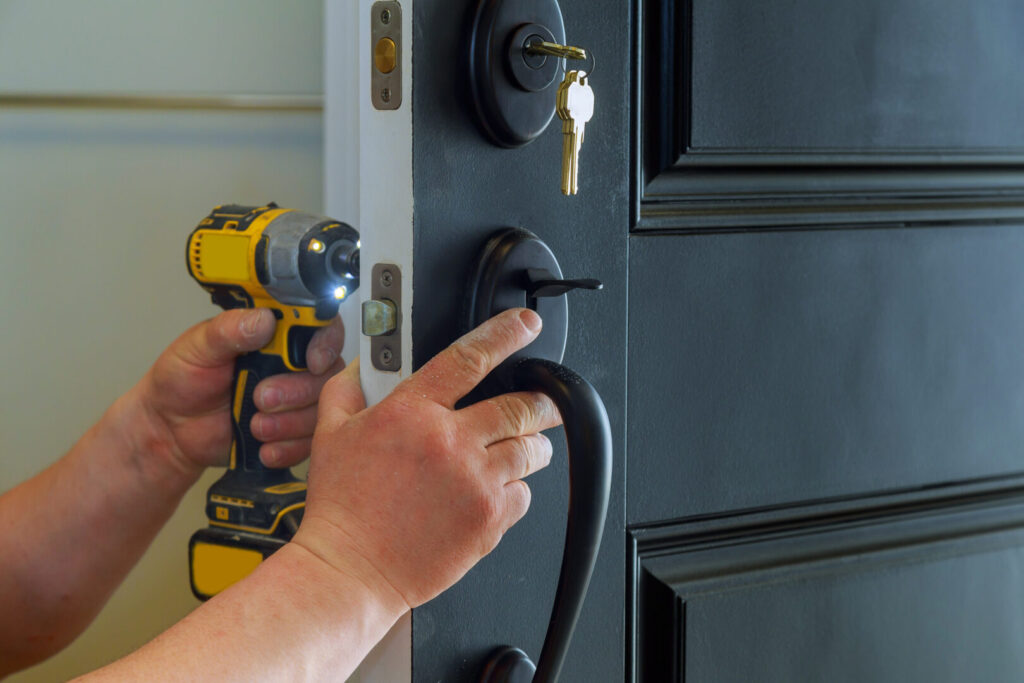
Home improvement projects for anyone’s aging in place needs can be simple and inexpensive or much more complex – performed by the homeowner in some cases or by us when that’s more appropriate.
Initial perspective
When it comes to home renovation and remodeling, there often is a tendency to go all-in and do everything at one time – whether the work is being done by the owner or a contractor. That’s fine, but it may not be necessary or advisable.
Each situation and need is personal and different, but consider the possibility of doing a little bit at a time spread out over a few months – especially for people doing their own work or when we, as aging-in-place providers, want to schedule several smaller sections of a more complete job to afford our clients less disruption of their living environments.
Sometimes there is an urgency, particularly for working with traumatic injuries or when safety needs to addressed in an immediate way. Otherwise, we may be able to take a more strategic approach and accomplish what we need to in a more budget-friendly, less intrusive way.
Gaining experience first-hand
Regardless of how many home improvements we have done for others, as aging-in-place providers, we might begin with our own homes so that we can experience what it takes to complete the jobs for our clients (including delays of getting materials and inspections as well as potentially unexpected issues that may surface), to have pictures of the before and after that we can share and use for illustration purposes, and to be able to honestly say that we have such improvements (such as the ones we are recommending) installed in our own homes.
This type of approach would apply mainly to safety elements, accessibility, comfort, and convenience factors with a universal design or visitability perspective rather than something involving a special need unless that applied to our household as well.
Some work is going to relatively simple and straightforward to complete. It can be done by the occupant of the home if they are capable and knowledgeable of how to complete the work. Otherwise, it can be scheduled as the first phase to be completed by the contractor or a handyman.
Creating priorities
We can establish priorities for our clients of work that is simple for us to do, takes relatively little time, and create minimal noise, duct, and disruption for them.
Work items or projects that would fall into this first phase of relatively minor – but important work would be swapping out all of the toggle-style light switches for rocker, push button, or torch ones. Switches that use dimmer switches or pre-selected timers also are fine to install at this time. If the client is comfortable performing this, they may, but otherwise, we would.
Replacing lightbulbs throughout the home – and it can be done over a few weeks if budget is a concern – with LED bulbs and fixtures to create more even and dependable lighting. The color output and the amount of lumens vary by the bulb selected. The main thing is to offer as much light as possible in a space and eliminate shadows or areas of low illumination. Remember that as we age – especially around the age of 65. we require more lights and better illumination in a space.
Replacing all door handles that currently are the round knobs or something other than levers with those that are single lever handles. Of course, these come in a choice of colors and finishes to suit the tastes of the occupants. If this already has been done, move onto the kitchen cabinets and drawers and replace the handles and pulls with something relatively easy to grasp and use. Be careful of sharp or extending edges on the handles that might catch on skin or clothing if someone brushes against them.
There are many other smaller projects such as these that can be undertaken by the owners or by our contracting team to begin making a huge difference in the quality of the home and the way it lives.
The bigger picture
After completing the smaller, simpler improvements – whether the client does some or all of these or whether that falls to us – we can move on to larger-scale projects that are going to impact the navigation, safety, and long-term use of the home.
Such large-scale projects might involve the kitchen (cabinets, islands, counter space, appliances, and flooring) and bath (shower, drains, other fixtures, and flooring), as well as other parts of the home that people see and experience regularly, including windows, flooring, and the general layout,
Additional work, regardless of how extensive it is or how much of the home might be involved, from a single room to multiple areas, can be planned and undertaken at a later time or even in stages if necessary for budget reasons or to keep the disruption to a minimum – if the client’s needs are not immediate.
There is so much we can do, but we need to monitor our response to make sure that it is consistent with the client’s needs, timing, and budget so that we are not overloading them with what we want to complete for them or what actually could be done.
